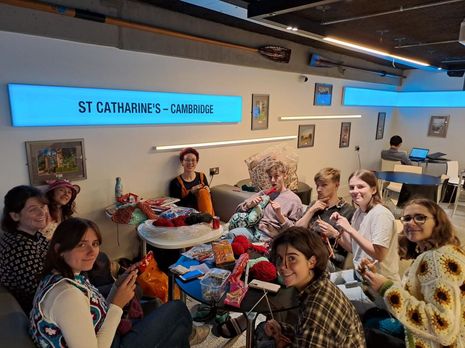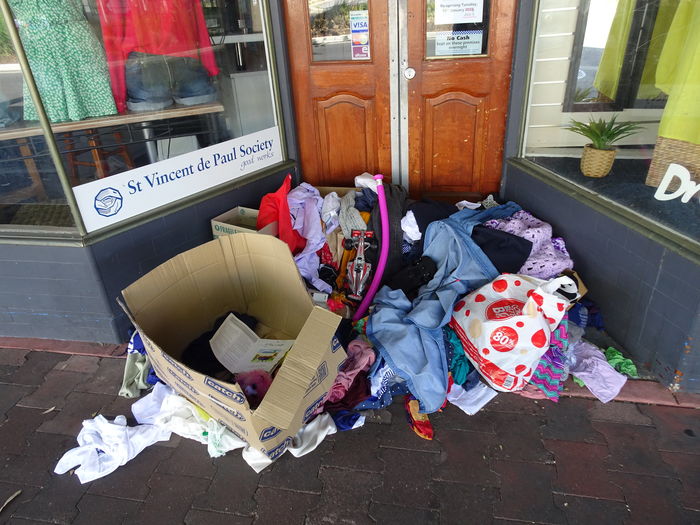Time to get hooked on crochet
Are you yarn-ing for a more sustainable way to accessorise your winter outfits? Annia Krzoska has the answer

As the weather gets colder, retailers begin to stock up on jumpers, hats, gloves and scarves. While there is typically a wide range available, it can sometimes be difficult to find things in the right shade or style – especially on a student budget. With plenty of yarn and knitting societies around Cambridge, it might be time to start creating our own winter wear exactly how we like it.
The ethics surrounding fast fashion have been long discussed. Crochet garments especially have come under fire, since machines struggle to create the stitches necessary for the crocheted appearance. As a result, many brands overwork and underpay employees abroad to bring cheap clothing to the shelves. Handmade items, at a fast fashion level, exploit the people that make them. Websites like SHEIN have also been accused of stealing from independent designers. As always, there’s also the issue of sustainability, as ordering online and buying from fast fashion results in a massive water consumption and an unnecessarily high CO2 emission. If buying cheap clothing has so many implications for sustainability, why don’t we look for alternatives?
Two weeks ago, I decided that a skinny, woollen, maroon scarf would be the perfect accessory for my outfit. Unfortunately, the closest thing that I could find on a budget was a bright red standard-size scarf from a local charity shop. Inspired, I picked up my knitting needles that I purchased before joining the St Catharine’s College Yarn Society last year, and decided to make my own. There are plenty of shops where you can source yarn and support small businesses, like Sew Knit Craft on King Street. I had some leftover acrylic yarn from several years back and decided to use that. £5 and three days later, and I had the perfect scarf. The time spent knitting reduced my (worrying) 11-hour screen time and allowed me to multi-task, as I used an audiobook to complete some reading for my dissertation.
“£5 and three days later, and I had the perfect scarf”
Of course, skilled knitters and crocheters can make a lot more than a scarf. Sometimes the cost of wool might exceed the cost of a fast-fashion jumper, but you are rewarded with a hobby in addition to the new accessory! Some people even choose to sell their crafts, or donate them to a good cause. Charity shops often have dedicated sections to hand-knitted children’s clothes, hats and gloves. Some colleges here in Cambridge have established yarn societies too, just like St Catharine’s has, meaning that your sustainable crafts can also open up the possibility to meet new people outside of the college bar.
Sewing is also a popular way to make your own clothes. If you or your college have access to a sewing machine, buying your own fabric and using your individual patterns is a great way to obtain some unique pieces. It can be difficult to find historical fashion at an affordable level, for instance, but you can cut down the cost by making your own. Second hand fabric is always available, or you can buy in bulk. Learning skills like sewing and knitting also helps you with repairs and adjustments of existing clothes. Last year, a friend helped me repair one of my old jumpers, and saved me the purchase of a replacement. Since the skills are versatile, you can create non-fashion related gifts around birthdays and holidays too.
“If you make your own clothes, your wardrobe will be unique to you and your taste”
Yarn can vary in quality, so it’s important to consider budget and expected outcome when investing in your pieces. I typically use the cheap acrylic because it’s functional and comfortable enough to wear, but there are softer and more durable bundles available. Fabric can also vary in quality, and it’s worth testing sheerness before using it to make your own clothes. Always check the washing instructions on the packaging of your materials too. Usually, wool can’t be tumble dried, although some makes will also be marked as “hand wash only”.
Once you have your material, you have complete freedom over your designs. A great thing about knitting is that you can use different stitches to create different looks, and you can mix and match colours as you see fit. If you want something niche that isn’t available in shops, make it yourself. The same goes for sewing; if you make your own clothes, your wardrobe will be unique to you and your taste. Handmade clothes are a great way to find the things that you want.
While it can take time to craft your own clothes, it is a lot more sustainable in the long run. Yes, low quality yarn can have environmental impacts, but it reduces the human impacts of mass production. Finding alternatives encourages fast fashion to produce less. With the cold season upon us, why not take the opportunity to find a new hobby that personalises your wardrobe and positively impacts the environment?
 News / Cambridge students set up encampment calling for Israel divestment6 May 2024
News / Cambridge students set up encampment calling for Israel divestment6 May 2024 News / Cambridge postgrad re-elected as City councillor4 May 2024
News / Cambridge postgrad re-elected as City councillor4 May 2024 News / Proposed changes to Cambridge exam resits remain stricter than most7 May 2024
News / Proposed changes to Cambridge exam resits remain stricter than most7 May 2024 News / Some supervisors’ effective pay rate £3 below living wage, new report finds5 May 2024
News / Some supervisors’ effective pay rate £3 below living wage, new report finds5 May 2024 Fashion / Class and closeted identities: how do fits fit into our cultures?6 May 2024
Fashion / Class and closeted identities: how do fits fit into our cultures?6 May 2024






